Hairline Lowering Surgery in Vietnam
Search and Compare the Best Clinics and Doctors at the Lowest Prices for Hairline Lowering Surgery in Vietnam
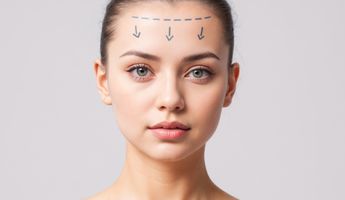
Find the best clinics for Hairline Lowering Surgery in Vietnam
No pricing info available
Egypt offers the best prices Worldwide
Price: $ 500
From 15 verified reviews
Trung Hoang, 21 September 2019
The eyelid nose in GNG is very full, the height is high enough so it looks very natural
- Home
- Vietnam
Compare Before & After Photos of _procedure_photos.phpHairline Lowering Surgery
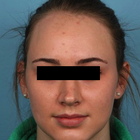
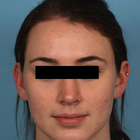
Front view
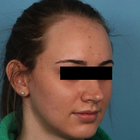
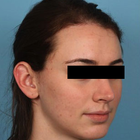
Half-side view

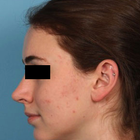
Full-side view

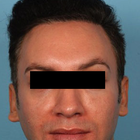
Front view
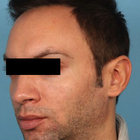
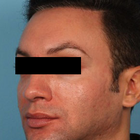
Half-side view


Full-side view
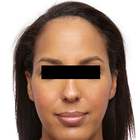

Front view
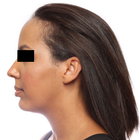

Full-side view
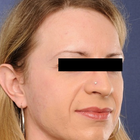
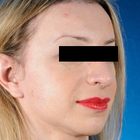
Half-side view
WHY US?
At Medijump, we're making medical easy. You can search, compare, discuss, and book your medical all in one place. We open the door to the best medical providers worldwide, saving you time and energy along the way, and it's all for FREE, no hidden fees, and no price markups guaranteed. So what are you waiting for?

Free

Best Price

Widest Selection

Risk-Free
What you need to know about Hairline Lowering Surgery in Vietnam
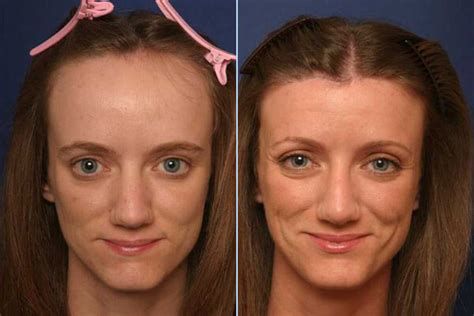
Also known as Forehead Reduction, Forehead Contouring or Scalp Advancement, Hairline Lowering Surgery allows patients to lower their frontal hairline, often lowering it by up to 2 inches. This procedure aims to reduce the distance between the hairline and the eyebrows, creating a more proportionate appearance. It is most commonly done on women with high hairlines, often the result of hair loss.
The procedure usually takes a couple of hours and is performed under general anesthetic. The new hairline is marked on the forehead, the surgeon will cut away this excess skin and the scalp is lowered to the new hairline. Incisions are strategically placed to minimize the visibility of the scar, making it virtually undetectable as it's covered by hair. It's common to combine hair lowering surgery with Facial Feminization Surgery (FFS). Contact a reputable clinic to ensure the best possible results.
What is the cost of Hairline Lowering Surgery in Vietnam?
Before choosing a procedure, it is essential to understand the cost of a Hairline Lowering Surgery in Vietnam. The cost might vary depending on a number of factors, including the complexity of the procedure, the surgeon's experience and reputation, and the facility. This approximate cost mostly covers the surgeon's fees, anaesthesia, required medical exams, and hospital or operation centre expenses. This is only a broad estimate, so when accounting for other charges, the exact prices might be higher. The ultimate cost may increase as a result of some factors, including consultation fees, outlays for post-operative care such medications, bandages, and follow-up consultations, as well as potential further surgeries to control complications or enhance outcomes.
It's important to keep in mind that Hairline Lowering Surgery is frequently regarded as a cosmetic surgery and may not be covered by conventional health insurance plans. It is best for the patient to speak with their insurance company before the procedure to understand the specific out-of-pocket costs they would have to pay. Some cosmetic surgery practises may provide financing options or payment plans to help patients manage the cost of the procedure.
What does a Hairline Lowering Surgery Procedure Involve?
Hairline lowering suregry is performed under local or general anesthesia. Before the operation begins, the surgeon draws an anticipated post-operative hairline. The surgery is performed according to this and an incision is made along the hairline. The excessive scalp is cut and removed and the rest is stretched to the new hairline. If this is not enough, tissue expanders are used to make it to the new hairline level. Sutures are used to fix the scalp to the bone and incisions are stitched with bandages being applied over the top.
The medical professional ensures that the incision marks are seamlessly concealed within the hairline, thereby reducing any visible traces of the procedure. Once the operation is concluded, the cut is stitched, and a gentle dressing is applied to shield the wound and diminish inflammation. It's important to understand that the intervention may lead to temporary loss of sensation or minor prickling around the area of incision, however, these symptoms tend to dissipate within several months.
How Long Should I Stay in Vietnam for a Hairline Lowering Surgery Procedure?
Hairline lowering surgery is an outpatient procedure that takes around 1.5 to 2 hours to complete. After the effects of the sedation subside, you are allowed to leave. Still, you should aim to stay in Vietnam for at least 6 days post-op. During this period, you will have a follow-up with the surgeon to check everything is healing as expected and the sutures are removed, usually after 5 to 6 days - this is when you're given the all-clear to travel home.
What's the Recovery Time for Hairline Lowering Surgery Procedures in Vietnam?
It will take between 3 to 6 months to allow the regrowth of hair through the scar, which is important as it hides the scar. Recovery time varies from person to person and some people can get back to their normal routine even after 3 days. At least a week is usually required to get back to normal activities and you may find some swelling and bruising over your forehead in the early days. Pain is managed with painkillers and all symptoms subside after a couple of days. A numbing of the forehead is common and normal feeling usually returns after 3 to 5 days.
What sort of Aftercare is Required for Hairline Lowering Surgery Procedures in Vietnam?
Aftercare following a Hairline Lowering Surgery is crucial to ensure a smooth recovery and minimization of potential complications. The following are some useful aftercare tips:
- Use icepacks in the initial days to help with inflammation and bruising. Ice is effective in reducing swelling immediately.
- Do not take anti-inflammatory medicines as they increase bleeding tendency.
- Continue taking painkillers prescribed by your doctor.
- Try not to look upwards and avoid frowning as this can be damaging to your stitches.
- Do not lift heavy objects.
- Keep your head a little higher whilst resting.
- Ensure that tight bandages have been applied over the wounds and replace regularly with fresh ones.
- Do not take a bath when the bandages are still intact as a wet bandage can be the cause of infection.
- Avoid strenuous activities such as the gym, running, swimming, etc. for at least 2 weeks after the surgery.
- Do not put hair bands or any other accessory on your head for some time.
- Do not drink or smoke as it will hinder the healing process.
- Ensure you have a diet rich in vitamin C as it makes the healing process faster.
What's the Success Rate of Hairline Lowering Surgery Procedures?
A Hairline Lowering Surgery frequently yields remarkable results, with a significant number of individuals expressing contentment with their post-procedure appearance. Nevertheless, outcomes may differ based on the medical institution or medical professional involved. With the possibility of the scar being visible with certain hairstyles, Hair Transplantation could be applied to further reduce the appearance of any scarring.
Notably, while Hairline Lowering Surgery tends to yield positive results for the majority, it might vary on an individual basis. Factors such as your unique hair growth pattern, scalp flexibility, and the overall state of your hair condition could all influence your final outcome. Therefore, maintaining ongoing communication with your medical professional and adhering to their recommendations both pre and post-treatment is crucial to optimising your results.
Are there Alternatives to Hairline Lowering Surgery Procedures in Vietnam?
Surgery is not the only option. Consider these methods before opting for surgical treatment:
- Grafting hair (Hair Transplant): with this technique more hairs are grafted along your hairline instead of lowering it. This is also used for the thickening of your hair. A new layer of hair is grafted below your natural hairline. 1200 to 2400 hair strands are grafted. These hairs fall out after 3 weeks then regrow in 4 months. 10 months is required before you'll see the true longterm result. This is a non-surgical alternative to hairline lowering surgery and it is found to be very effective in reducing the size of your forehead.
- Hairstyling: You can hide a big forehead by styling your hair in such a manner. Of course, this is a non-surgical method. Choose those hairstyles which cover your forehead the most. Some people will use headscarves and hats to also hide their forehead.
What Should You Expect Before and After the Procedure?
A fundamental phase before proceeding with a Hairline Lowering Surgery in Vietnam is the preliminary discussion with your medical expert. This interaction involves a comprehensive health evaluation, scrutiny of your medical background, and discussion of any medications you currently use by your expert. They will also perform an exhaustive examination of your scalp and hairline. This evaluation offers the medical professional an opportunity to decide if you're the perfect fit for the process. Moreover, they will deliberate on your anticipation and cosmetic objectives, ensuring they align with the realistic outcomes offered by Hairline Lowering Surgery.
Feeling slight discomfort, swelling, and bruising in the treated part is a normal sensation post a Hairline Lowering Surgery. It is vital to abide by the directives of your medical professional, which may involve keeping your cranium elevated and avoiding rigorous activities to manage these symptoms. For the initial few days succeeding the procedure, rest is essential, providing your body with time to recuperate. Your medical expert might recommend pain-relief therapy for discomfort management. Usually, stitches are taken out approximately one week after the surgery, and by this time, most people can get back to their work and routine activities. Regular follow-up sessions with your medical expert should be expected during the recovery span. These sessions offer your expert a chance to track your recovery progress, manage any prospective obstacles, and provide support during your healing period.
What are the Risks and Side Effects of Hairline Lowering Surgery in Vietnam?
While side effects are usually minimal, they are important to think about. After the Hairline Lowering Surgery, you might feel some short-term side effects like swelling, pain, and bruising around the spot where you had the surgery. This is normal during healing and usually goes away in a few days. Numbness or tingling near the cut is also common after a Hairline Lowering Surgery. This happens because small nerves can be affected during the procedure. As your body recovers, these feelings should slowly lessen and finally go away.
Some people might notice hair loss, usually temporary, around the cut. This happens due to the stress on the hair roots during the procedure. However, this kind of hair loss usually doesn't last more than a few months, and new hair will start to grow. More serious risks include infection, heavy bleeding, or bad reactions to the anesthesia. While these problems are rare, they need immediate medical help. To reduce these risks, it's crucial to pick a good surgeon and follow their before and after care instructions.
Whilst the information presented here has been accurately sourced and verified by a medical professional for its accuracy, it is still advised to consult with your doctor before pursuing a medical treatment at one of the listed medical providers
No Time?
Tell us what you're looking for and we'll reachout to the top clinics all at once
Enquire Now

Popular Procedures in Vietnam
Prices Start From $136

Prices Start From $4

Prices Start From $126

Recommended Medical Centers in Vietnam for Hairline Lowering Surgery

- Interpreter services
- Translation service
- Religious facilities
- Medical records transfer
- Medical travel insurance
- Health insurance coordination
- TV in the room
- Safe in the room
- Phone in the room
- Private rooms for patients available

- Interpreter services
- Translation service
- Religious facilities
- Medical records transfer
- Medical travel insurance
- Health insurance coordination
- TV in the room
- Safe in the room
- Phone in the room
- Private rooms for patients available

- Interpreter services
- Translation service
- Religious facilities
- Medical records transfer
- Medical travel insurance
- Health insurance coordination
- TV in the room
- Safe in the room
- Phone in the room
- Private rooms for patients available

- Interpreter services
- Translation service
- Religious facilities
- Medical records transfer
- Medical travel insurance
- Health insurance coordination
- TV in the room
- Safe in the room
- Phone in the room
- Private rooms for patients available

- Interpreter services
- Translation service
- Religious facilities
- Medical records transfer
- Medical travel insurance
- Health insurance coordination
- TV in the room
- Safe in the room
- Phone in the room
- Private rooms for patients available

- Interpreter services
- Translation service
- Religious facilities
- Medical records transfer
- Medical travel insurance
- Health insurance coordination
- TV in the room
- Safe in the room
- Phone in the room
- Private rooms for patients available

- Interpreter services
- Translation service
- Religious facilities
- Medical records transfer
- Medical travel insurance
- Health insurance coordination
- TV in the room
- Safe in the room
- Phone in the room
- Private rooms for patients available

- Interpreter services
- Translation service
- Religious facilities
- Medical records transfer
- Medical travel insurance
- Health insurance coordination
- TV in the room
- Safe in the room
- Phone in the room
- Private rooms for patients available

- Interpreter services
- Translation service
- Religious facilities
- Medical records transfer
- Medical travel insurance
- Health insurance coordination
- TV in the room
- Safe in the room
- Phone in the room
- Private rooms for patients available

- Interpreter services
- Translation service
- Religious facilities
- Medical records transfer
- Medical travel insurance
- Health insurance coordination
- TV in the room
- Safe in the room
- Phone in the room
- Private rooms for patients available
Hairline Lowering Surgery in and around Vietnam
About Vietnam
Situated at the extreme east of the Indochina Peninsula, Vietnam is a country that exhibits profound cultural richness and captivating landscapes. It holds the distinction of being the world's 15th most populous country, housing over 94 million residents scattered across its diverse geographical expanse. Despite grappling with issues like poverty and corruption, Vietnam's impressive economic performance cannot be overlooked. Notably, the country boasts a commendable GDP growth rate and is celebrated as one of the fastest-growing economies globally.
This country is well-known around the globe for its breathtaking natural beauty. It's also recognized for its energetic, larger-than-life cities that are always buzzing with activity. Furthermore, its culture is intricate and assorted, attracting millions who appreciate rich customs and traditions. In 2018, this place was a magnet for tourists, drawing in over 15 million visitors who were eager to immerse themselves in its unique way of life.
Broadly celebrated for its splendid scenic landscapes, there's an undeniable charm this country possesses. The vivacious megacities are a thrilling fusion of noise, colors, and life that leaves an impression on all who stroll through them. The cultural mosaic of this land is complex, and varied, presenting evidence of a fascinating history shared through countless generations. The year 2018 saw floods of tourists - well in excess of 15 million - come to explore, each leaving with their own tale of discovery within its borders.
The rapid development of Vietnam has made it into the next medical tourism hub in Southeast Asia. Now, medical tourists consider the country as their potential medical destination. Many new medical centers have sprung up and welcomed thousands of patients to relax and enjoy their treatment. The country offers a wide range of cost-effective medical treatment, well-trained doctors, and professional equipment. The country focuses on promoting medical tourism to neighboring markets such as Laos and Cambodia.
Popular Parts of Vietnam
- Ho Chi Minh, formerly Saigon, is the most populous city in Vietnam. It is the financial center and home to the largest stock exchange in the country. Tourists coming to the city can enjoy its many tourist spots such as shopping in the Ben Thanh Market, viewing the city from Saigon Skydeck, discovering the city’s history from The War Remnants Museum, or learning the culture of Jade Emperor Pagoda. Other than the attractions, the city is also famous for its traditional food, including pho and pork rolls.
- Hanoi is the capital of Vietnam and the country’s major metropolitan and political center. Tourists will find many well-preserved colonial buildings, museums, and pagodas. As one of the most ancient capitals in the world, most tourists will be delighted to explore the city’s historic Old Quarter, spend a beautiful day in Hoan Kiem Lake, or visit the Temple of Literature.
- Hoi An invites tourists to experience a slow-paced, relaxing lifestyle. The city’s Old Town has successfully preserved Japanese merchant houses and Chinese temples. To get a glimpse of the city, many tourists will opt for a bicycle tour. The city also offers a unique farming and fishing experience for its visitors. Off the coast of the city, tourists will be overjoyed to find a diving paradise with hundreds of different coral and fish.
- Nha Trang is a coastal city on the South Central Coast of the country. Tourists usually come to this city for its stunning white sandy beaches and scuba diving. In addition to the beautiful beaches, Nha Trang Bay is considered to be one of the world’s most beautiful bays. The city is also home to the remnants of the Champa Kingdom, gothic-style Catholic churches, and many Buddhist temples.
- Da Nang is located on the coast of the South China Sea, making it the most important port city of Vietnam. The city continues to evolve each year, with modern hotels and restaurants being developed all around it. It is the tourist capital of South Central Vietnam. Tourists visit the city to enjoy its tranquil beaches with crystal clear waters, beautiful ancient pagodas, interesting French colonial buildings, and green national parks.
Weather and Climate in Vietnam
Vietnam, situated uniquely on the map, experiences differing climates in its varied regions. If you travel south, you'll find a tropical monsoon climate. This climate type typically comes with two main seasons - the wet season and the dry season.
Straying north, however, you'll encounter a different story altogether. Here, the climate is categorized as monsoonal but it's accompanied by four clear-cut seasons - spring, summer, autumn, and winter. So, regardless of the time of year, there's a high chance you'll experience a unique slice of Vietnamese weather, depending entirely on which part of the country you've set foot in.
- The south experiences wet and dry season and the wet season lasts from September to December. There is more rainfall between September and November. The dry season starts in January and ends in August and the average annual temperature is around 26 °C. Some cities such as Da Nang are prone to typhoons during the wet season.
- In the north, spring starts in February characterized by some rain and cold temperature. The end of April is the start of summer, with intense sunshine and sometimes even a heatwave. The average temperature during Summer is 27.5 °C but it can feel a lot hotter. Autumn starts in September and ends in November. Autumn has the best weather, with a lot of sunshine and calm wind. From December to January is Winter and it is generally cold with an average temperature of 17 °C which can drop as low as 7 °C.
Getting Around in Vietnam
There are numerous airports in Vietnam that connect the major cities. However, there are three major international airports where international visitors usually arrive at, Ho Chi Minh, Hanoi, and Da Nang. Most international flights will arrive at Tan Son Nhat International Airport which serves domestic and international flights to and from major cities in Asia, Europe, and Australia. In terms of capacity, the biggest airport in the country is the Noi Bai International Airport in Hanoi.
The airport is a hub for both local and global travel. It houses two terminals within its boundaries. Terminal 1 is tasked with the management of domestic flights, servicing those traveling within the country's borders. On the other hand, Terminal 2 oversees international flight operations, connecting this airport to numerous cities across Asia and Europe. Affordable airlines, including the likes of Jetstar Pacific and VietJet Air, schedule flights departing from and arriving at both Tan Son Nhat and Noi Bai airports - a testament to the airport's reach and convenience to travelers with varying budget needs.
Tourists do have a few travel options to get around Vietnam. The country is served by trains running from Ho Chi Minh City to Hanoi and it stops in many of the popular areas such as Da Nang and Nha Trang. Buses are a great option for tourists to get around the country and the buses are privately operated buses called “open tour” buses. There is also a national bus system, but they are generally not as comfortable as the private buses.
Taxis are available in most cities and can be hailed directly from the streets or via a phone call. The fare usually starts at VND 10,000 to VND 12,000. If you need to be quick, try the motorcycle taxis known as Xe Om. You will need to negotiate the price but they can be found in most parts of the cities. Cyclo (similar to trishaw) is also available for short-distance travel within a city. For easier travel, opt for Grab Motorbike, an online hailing app similar to Uber.
Tourist Visas in Vietnam
- Citizens of 24 countries, including Singapore, Thailand, Russia, and Japan, can enter and stay in Vietnam for up to 90 days without a visa.
- Citizens of 81 countries, including the United States, the European Union, and Canada, can apply for an e-visa. An e-visa is a single-entry visa that allows the holder to stay in Vietnam for up to 30 days.
- Citizens of all other countries need to apply for a visa at a Vietnamese embassy or consulate.
How to apply for an e-visa:
- To apply for an e-visa, you will need to create an account on the Vietnam e-Visa website and complete an online application form. You will also need to upload a digital photo of yourself and a scan of your passport.
- The e-visa fee is USD 25.
- Once your application is approved, you will receive an e-visa by email. The e-visa must be printed out and presented to immigration officials upon arrival in Vietnam.
Additional information:
- All visitors to Vietnam must have a passport valid for at least six months beyond their intended date of departure from Vietnam.
- Visitors who obtain an e-visa must have a valid passport and a digital photo.
- Visitors who apply for a visa at a Vietnamese embassy or consulate may also need to provide additional documentation, such as a proof of onward travel or a letter of invitation.
Additional Information
- Local Currency: The official currency is the Vietnamese Dong and 1 USD converts to VND 24,455.
- Money & Payments: ATMs are widely available throughout the country. Credit and debit cards are accepted in many hotels but most restaurants and shops still only accept cash. Tipping is generally not expected but will be appreciated.
- Local Language: Vietnamese is the local language. English is not widely spoken, but if you are staying in popular tourist areas, there will be people who can speak some English.
- Local Culture and Religion: Most of the population follows the Vietnamese folk religion. Buddhism, Christianity, Hoahaoism, Islam, and Hinduism are also freely practiced.
- Public Holidays: The country celebrates major religious and national holidays such as New Year’s Day, Saigon Liberation Day, and Vietnam Traditional Lunar New Year.
Popular Searches
- Plastic Surgery in Thailand
- Dental Implants in Thailand
- Hair Transplant in Thailand
- Breast Augmentation Thailand
- Gastric Sleeve in Thailand
- Gender Reassignment Surgery in Thailand
- Laser Hair Removal in Bangkok
- Botox in Bangkok
- Dermatology in Bangkok
- Breast Augmentation in Bangkok
- Coolsculpting in Bangkok
- Veneers in Turkey
- Hair Transplant in Turkey
- Rhinoplasty in Turkey
- Stem Cell Therapy in Mexico
- Rhinoplasty in Mexico
- Liposuction in Mexico
- Coolsculpting in Tijuana
- Rhinoplasty in Korea
- Scar Removal in Korea
- Gastric Sleeve in Turkey
- Bone Marrow Transplant in India
- Invisalign in Malaysia
- Plastic Surgery in the Dominican Republic
- Tummy Tuck in the Dominican Republic
- Plastic and Cosmetic Surgery in Poland
- Rhinoplasty in Poland
- Hair Implant in Poland
- Dental Implants in Poland
- IVF in Turkey
